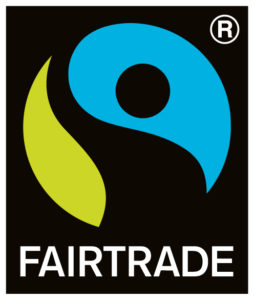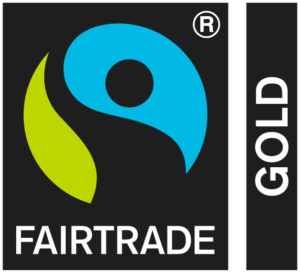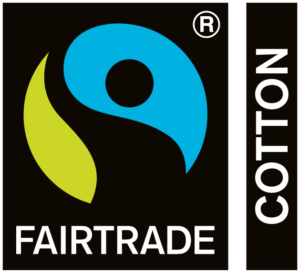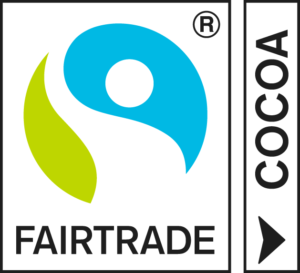Licensee FAQ
Your questions answered
Need some more info? You’ve come to the right place!
What is a licensee?
Simply put, a licensee is a business that has been granted a license to use the Fairtrade Mark on their products. To achieve this, the business must first be audited by Fairtrade Australia and New Zealand.
Can I sell Fairtrade commodities that don’t have the Fairtrade Mark?
Yes, if you sell Fairtrade commodities without the Fairtrade Mark then you can still become a certified operator. For example, a Fairtrade licensee is a trader and they sell Fairtrade commodities in bulk to other businesses. So they still need to be a licensee, but they do not sell to consumers and therefore don’t want to put the Mark on the packaging.
Can I still get the Mark on my product if I don’t manufacture it myself?
Yes! But first, please complete the Get Certified quiz to see what type of licensee you may be and then, how to become one (a licensee).
I'm a cafe selling Fairtrade coffee and chocolate, what resources, assistance or support can Fairtrade provide me?
We can provide door stickers, brochures, stories and case studies about Fairtrade producer communities and then work with you to shape and share your Fairtrade commitment message to your customers.
What is the Minimum Price?
The guarantee of a Minimum Price is unique to Fairtrade certification. For most Fairtrade goods there is a Fairtrade Minimum Price which covers the cost of sustainable production for the product in that region. If the market price for that product is higher than our minimum price, the farmers and workers don’t miss out – they should receive this higher market price too. The purpose of the Minimum Price is to give a safety net for when prices crash.
What is the Premium?
This is over and above the Fairtrade price; that is, the Fairtrade Premium is an additional sum of money which goes into a communal fund for workers and farmers to use as they see fit, to improve their social, economic and environmental conditions.
Farmers and workers alone determine what is most important to them and they do so democratically, during annual meetings for example. Funds can be spent on education or healthcare for their children, improving their business or building vital infrastructure such as roads and bridges for their community. The Fairtrade Premium is a real game-changer.
My business doesn’t seem to fit neatly into the certification quiz, can I still get certified?
Please get in touch if this is you. Contact licensing@fairtrade.com.au or call (03) 9602 2225
What are the different Fairtrade Marks? What do they mean exactly?
The Fairtrade system offers several programs to ensure farmers are able to sell as much of their product as possible.and that businesses have the options they need for the different types of products they sell.
The Fairtrade Mark

The standard Fairtrade Mark on the left is one of the most recognised certification marks in the world. It signifies that the product is ‘All that can be Fairtrade, is Fairtrade’. This applies to both single-ingredient products like coffee, but also to composite products like chocolate or ice cream. It basically tells the shopper that this is the most ethical choice they can make.
Fairtrade Gold Mark and Fairtrade Cotton Mark


Gold and Cotton both have their own stand-alone Marks.
Fairtrade Sourced Ingredient Marks

The Fairtrade Sourced Ingredient (FSI) Mark can be used on composite products when only one or two ingredients are Fairtrade certified. For example, Fairtrade Tea in an iced tea drink. Or, Fairtrade cocoa in a biscuit. The FSI Mark was introduced to open up new markets for Fairtrade farmers and provide more opportunities for businesses to use the trusted Fairtrade label on their products.
Can I have both the Fairtrade Mark and the Fairtrade Sourced Ingredient (FSI) Mark on my products?
Fairtrade Mark options are there to provide opportunities to farmers based on their product or supply chain. It is also about enabling additional opportunities for businesses to certify the different types of products they sell. So, you can have different products carrying either the Fairtrade Mark or the FSI Mark, but you cannot have both Marks on the same product. Our teams will be able to help you through this process.
Physical Traceability vs Mass Balance
The majority of Fairtrade products, including all Fairtrade coffee, bananas and cotton, are fully traceable, through the supply chain, from the field to the product’s spot on the supermarket shelf.
But there are some products where this tracking is very difficult to achieve, and can actually limit sales for farmers. There are three products in the Australian and New Zealand markets where this is the case – cocoa, tea and sugar. These products are routinely mixed or go through complex manufacturing processes in local mills, factories or at the point of shipping.
So Fairtrade (and many other certifiers) operate a traceability program type known as ‘mass balance’ to ensure farmers and workers have maximum opportunities to sell their certified crops. Under mass balance, companies are permitted to mix Fairtrade and non-Fairtrade products during the manufacturing process. This program comes with strict tracking and auditing requirements to ensure that the amount of ingredients in the final Fairtrade labeled product matches the amount sold by the farmers. Given the depth of poverty experienced by many small-scale farmers, and the urgency of their need for better terms of trade, this is a workable and pragmatic solution that has given thousands of farmers the opportunity to benefit from Fairtrade.
At Fairtrade, transparency is key. So you will know that a mass balance ingredient has been used by the appearance of an arrow next to the Fairtrade or FSI Mark.

